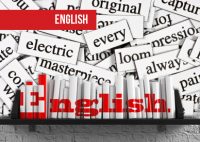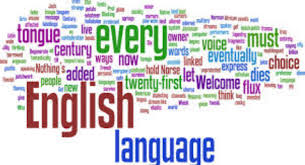Comprehension For SBI PO set – 21

Comprehension Set – 22
Right of entry to education, an ample teaching-learning environment, a suitable curriculum and an empowered and all-encompassing faculty are four essential prerequisites of an education system that seeks to enable social transformation. While educational reform since the 1980s was strongly focused on the first two elements, the late 1990s brought the role of the curriculum into national focus. The critical link that binds these four critical elements together-the activity of the faculty-continues to be cast aside, by political ideologies of most hues, contemporary curriculum reform efforts and the professional practices of the faculty. Far-reaching educational initiatives of both the Left and the Right have recognized the potential power of the faculty. In multiple experiments, they have used this dormant force to build committed institutions and cadres of faculties dedicated to their particular causes. In many instances this has led to extreme politicization of the college faculty. In others it has led to the education of a generation of students in half-truths underpinned by the personal beliefs, sectarian concerns and folk pedagogy of faculties who have had little access themselves to education and training in related areas. Over the last decade or so, educational reform has included, apart from access, a focus on developing alternative text materials, and the training of faculty to handle these materials, without directly engaging with the issue of curriculum revamp. At the turn of the 20th century, a major national curriculum redesign was initiated following the change of political regime at the centre. The subsequent development of college programme came under wide public scrutiny and debate. Issues of equity, inclusion and exclusion, learner medley religious identity and communalism gained considerable importance in the curriculum debates that followed. For instance, scholars argued that “… the curriculum, while loud on rhetoric, fails to address the equality of education that students of underprivileged and marginalized groups experience.” Several other critics described the revised curriculum as a retrogressive step in education that sought to impose the religious agenda in the garb of a national identity. The subsequent change of national government in 2004 led to the curriculum review in 2005, underlining a new political interest in the role of education in national development, its role in social mobilization and transformation directed specifically at questions of caste and gender asymmetry and minority empowerment. Deeper than these politically driven initiatives, however, the professional need for curriculum review emerges from the long ossification of a national education system that continues to view faculty as “dispensers of information” and students as “passive recipients” of an “education” sought to be “delivered” in four-walled classrooms with little scope to develop critical thinking and understanding.
1. Which of the following best describes the phrase “passive recipients” as used in the passage?
(a) The users of the educational system
(b) The political ideology of right and left parties
(c) Well-framed curriculum guiding the teaching/learning process
(d) Free access to education system
(e) The faculty
2. To facilitate social transformation, which of the following has been identified by the author as one of the factors?
(a) A committed political ideology
(b) Support of the well-framed curriculum
(c) A strong administration system
(d) Carefully planned education delivery
(e) None of these
3. Prior to 1990 what was NOT on the agenda of the educational reforms?
(A) An appropriate curriculum
(B) Well-managed admission process
(a) Only A
(b) Only B
(c) Both A and B
(d) Either A or B
(e) None of these
4. Which of the following is the most opposite in meaning of the word medley as used in the passage?
(a) amalgamate
(b) united
(c) unity
(d) diffuse
(e) focusing
5. Which of the following best describes the word ossification as used in the passage?
(a) hardening
(b) plasticity
(c) imbibitions
(d) incorporation
(e) coalescing
6. Revamping of the text material was the main focus in
(a) early eighties
(b) late nineties
(c) 21st century
(d) evolving curriculum framework
(e) training faculty
7. Which of the following best describes the meaning of the word underpinned as used in the passage?
(a) advocated
(b) supported
(c) prepared
(d) bolstered
(e) boosted
8. What hampers the critical thinking ability of college-going students?
(a) The emphasis on rote memorization and recalling the facts of education based on real experience
(b) Lack of political will to develop these abilities
(c) Absence of focus while designing curriculum framework
(d) Ignoring the active role of faculty and the student
(e) Lack of proper tests of critical thinking ability
9. How did personal beliefs and folk pedagogy enter into educational system?
(a) The college acted as an agent of local communities.
(b)The faculties were not properly trained.
(c) College faculties started acting as passive listeners.
(d) The loopholes in the educational system allowed it to happen.
(e) It was by design.
10. Development of textbooks generated public debate on many issues except
(A) making the curriculum student-centred.
(B) using teaching community as an agency to bring change.
(a) Only A
(b) Only B
(c) Both A and B
(d) Either A or B
(e) None of these
Answer key:
1. (a) 2. (b) 3. (a) 4. (c) 5. (a) 6. (c) 7. (b) 8. (c) 9. (b) 10. (c)



